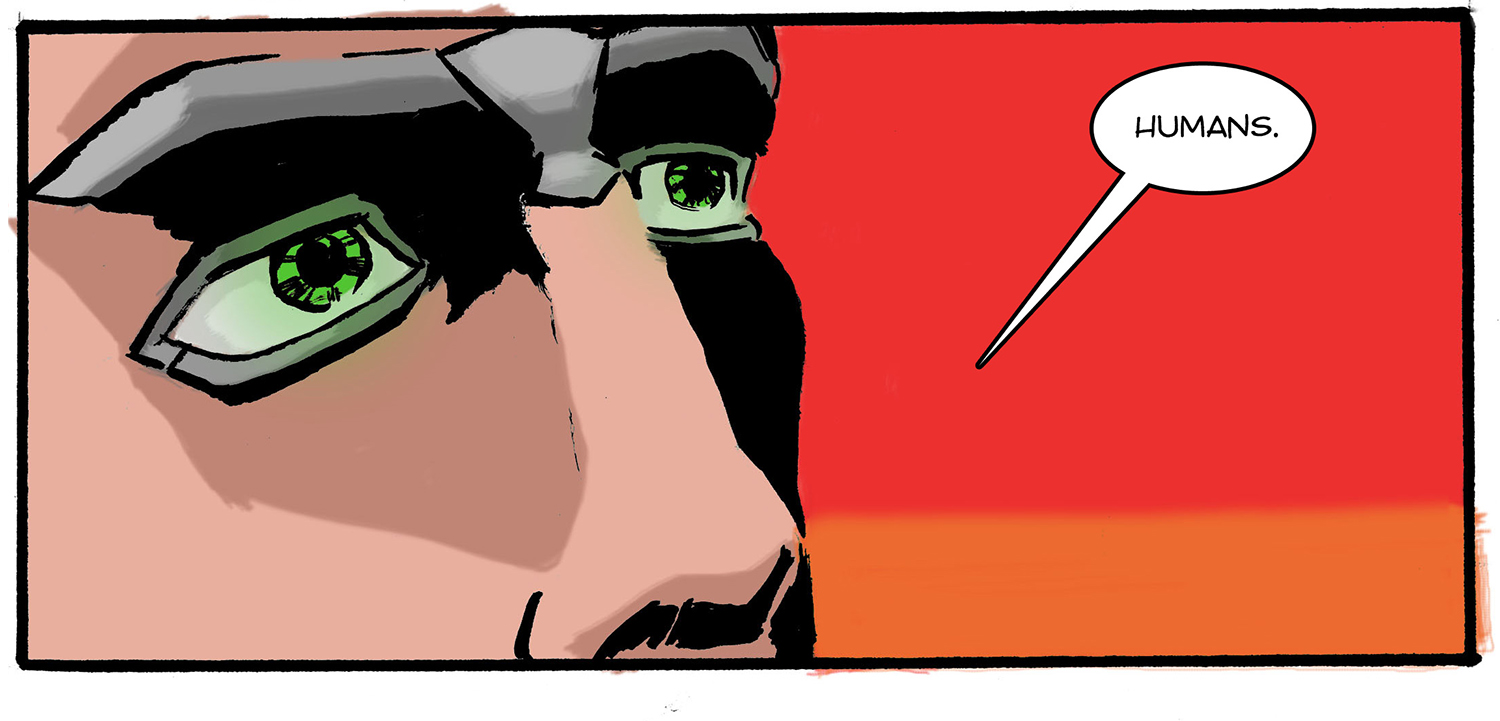Adapting Your Ideas : How To Draw Comics
A panel from After Life Part One. Art by Colin Nitta, story and colors by Chris Oldaker, 2017.
You can officially grab Part 1 of After Life today from super-dimension.com! This one's been a long time coming and it sat on the shelf for quite some time, but it's important to me because it represents my rediscovery of the comics medium.
I'd always been interested in comics and in my teens had forays into creating my own stuff, but as I grew older I discovered other interests and eventually I started thinking in terms of music, film, painting, novels. It wasn't until an embarrassing number of years later that I realized that the answer was in front of me the whole time. There was a medium that would allow me to dabble in the majority of my disparate interests. I began adapting a few short stories and in-progress novels to the comic format and quickly realized I was an idiot for not making the connection sooner.
After Life came at an early stage in the journey where I wasn't yet ready to commit fully. Producing an indie comic is a massive undertaking. I couldn't imagine writing, drawing, AND coloring everything myself, so I sought out an artist to work with, as I hadn't been drawing regularly during those years. Enter Colin Nitta, a young illustrator about to begin his senior year at my alma mater, California College of the Arts. We worked together over the course of a summer to produce as much of this epic story that spanned thousands of years as we could. I banged away at the script, while Colin furiously penciled and inked it into reality. We got about 50 pages in, not bad at all for a few months work!
Early Lessons
What I learned from the process was that adapting a short story to comics involves a lot of decision-making around what things are best left unsaid or conveyed visually and what things benefit from being more expressly laid out in dialog, thought bubbles, or captions.
When working in prose, you can hide things in the sheer volume of text. You have the benefit that the reader doesn't always know what's an important detail that will come back into play later and what's simply color added to build the scene. In the comics medium, however, it's harder to sneak things into the text subtly. The economy of words and images required in creating comics draws every single word into a much sharper focus for both the reader and creator. Each panel or page you add to the story also adds hours of additional labor, so your decisions carry a lot of weight not only in how you produce the book, but also in how the reader experiences it. What you can express in one paragraph of prose (taking up only 1/4 of a page) may take 3 or 4 pages to play out in a comic - it's a very different pacing and experience to consider.
On the flipside, using comics as a storytelling medium means that an emotional response that may take several sentences to get across in prose can be easily (and subtly) conveyed with a facial expression in a single panel. So the major difference when writing prose vs. writing for comics is deciding what to show and what to tell and how those decisions mold the experience for the reader.
Use the Medium
Some bold decisions may turn off some readers and most may likely go unnoticed by the majority, but the details and subtlety should always be there for those that want to look deeper. For example, in Part One of After Life, there is a 3 or 4 page sequence without any dialog or captions that I know may not work for some people. In fact, I think most readers will have a difficult time deciphering what is happening, but at the same time, I felt that there were things happening in the sequence that didn't need to be explained yet, and may in fact be ruined by the explaining.
A silent panel from After Life Part One. Art by Colin Nitta, story and colors by Chris Oldaker, 2017.
There's also the fact that when something isn't clear, the reader (if engaged) will make more of an effort to understand it, they may go back a few pages to re-read or take time to soak up the visual details. Those can be powerful tools for a writer or artist to use.
Balance Your Storytelling
Comics always work best when there's a fine balance between the words and images, when they rely on each other to tell the full story. A lot of creators that are just starting out suffer from what I call Powerpoint Syndrome, where their panels are just illustrating what the captions are saying like the world's most tedious slide presentation. It's just wasted space. When you're attempting to an adapt an original story, or even an existing piece of prose, remember to take the time to really think through which elements of the story work best as text and which are best tackled by visuals and consider how they both interplay. It will open up a whole new world of storytelling possibilities.
To read the full issue being referenced in this post, head over here and grab a download of After Life Part One for only $1.50!

